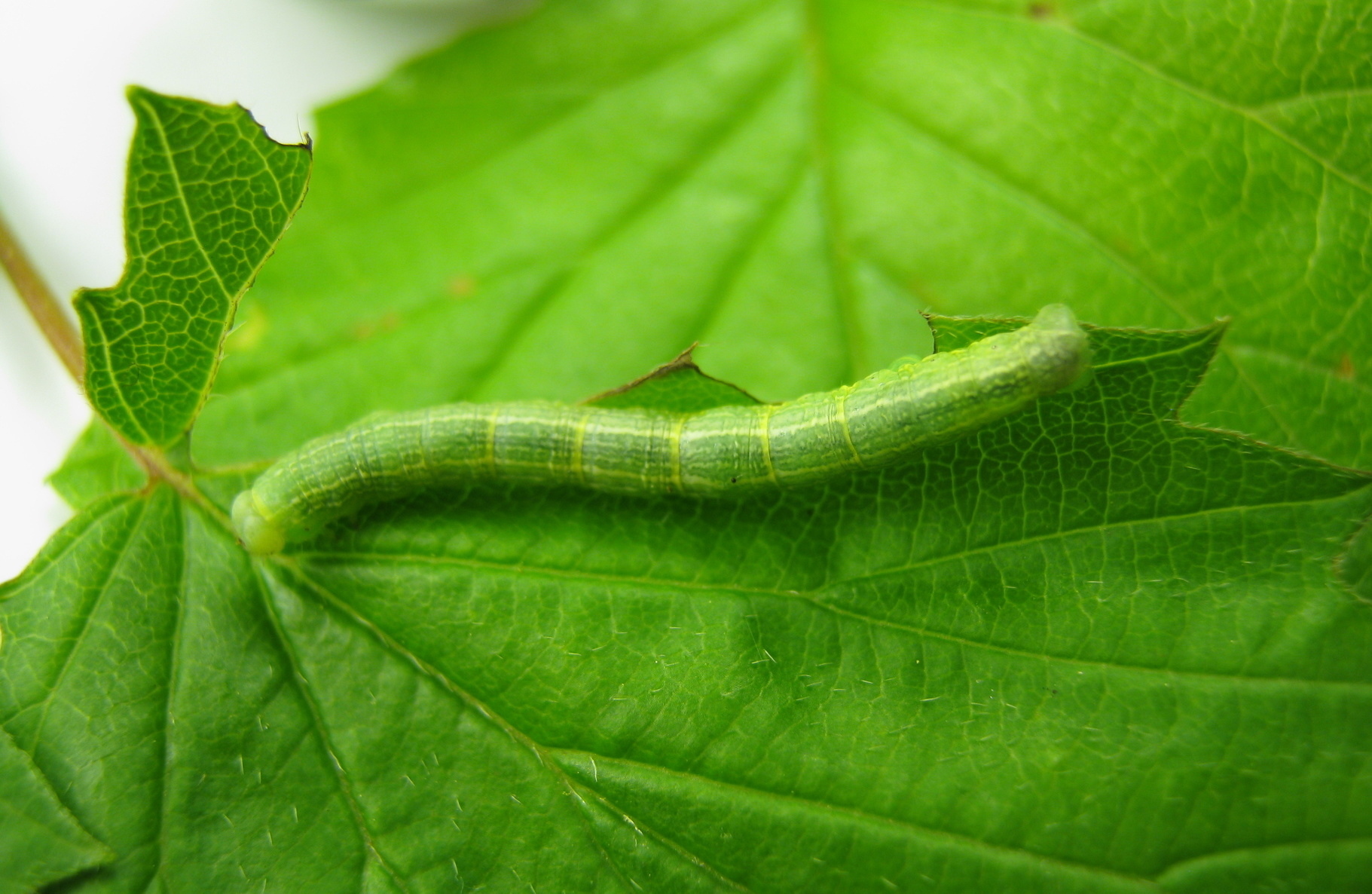
As the leaves turn brilliant shades of red, amber and gold, creeping, crawling cankerworms are inching their way toward the canopies to destroy the colorful leaves on your favorite trees.
“Cankerworms can cause complete defoliation,” says Jeff Hahn, extension entomologist with the University of Minnesota.
The insects, which inch their way up tree trunks to reach the leaves, feed on a number of deciduous shade tree species, including elm, maple, oak, hickory, boxelder, basswood and ash. Infestations are common across North America with infestations occurring from Maine to California.
Life Cycle of a Fall Cankerworm
There are two species of cankerworms:
The fall cankerworms (Alsophila pometaria) emerge from the ground in late fall. In their larval stage, the wingless, small green caterpillars emerge from the soil after the first frost; the adult female cankerworms crawl up tree trunks to lay eggs and can deposit upward of 100 eggs on the branches and twigs. They overwinter in the tree, then cankerworm eggs hatch in the early spring feed on the emerging buds and new leaves.
The spring cankerworm (Paleacrita vernata). Closely related to its fall cousin, adult spring cankerworms emerge and deposit eggs in late March and throughout April.
Both species are very similar in appearance. One way to tell them apart is to count their short “prolegs.” Fall cankerworms have three pairs, spring cankerworms two.
They chow down on their host trees at about the same time. The damage first shows up as shot holes. With a significant infestation, they eat every part of a tree’s leaves except the midrib.
The larvae dangle themselves on silken threads until swept away by a breeze to the ground, or to another host.
Defoliation Left Behind
Defoliation is not just unattractive; it can weaken trees, slow growth and cause trees to die — not to mention the “ick” factor associated with having thousands of worms crawling around the trunks and canopies, dropping feces from treetops.
Cankerworm infestations can be devastating and controlling the adult fall cankerworm population is key to preventing further damage in the spring.
Tree Banding to Control Cankerworms
Insecticides can be used to control cankerworms, also known as inchworms or also known as loopers, due to their slow, looping crawling motion. Bacillus thuringiensis, or b.t., goes by many trade names and is effective when sprayed in spring.
Tree banding is another popular — and nonchemical — option to treat the pests. Tree bands are sticky adhesives that wrap around the trunks of deciduous trees. They capture the wingless female cankerworms as they ascend the trunk.

“For every cankerworm stuck in glue, it’s one less that can go up to the top of the tree to lay eggs,” Hahn says.
The bands are commonly wrapped around trees that have been attacked by cankerworms in the past. Young, newly planted trees can also benefit from banding.
“A healthy mature tree can tolerate complete defoliation — although there are aesthetic concerns,” says Hahn. “You have to take more care to prevent smaller trees from defoliation because they can’t handle the stress.”
Banding trees also protect against other climbing insects. Codling moths, pecan weevils and ants can’t get past the sticky bug barrier. Tree bands are low cost and nontoxic. In heavily infested areas, capture completely cover the sticky surface, requiring replacement bands in mid-season. Arborists can install tree bands but it’s also a simple DIY pest control option.
Community Banding Efforts
Banding also requires a community effort. In communities such as Fairfax County, Va., Regina, Saskatchewan, and Durham, N.C., citywide tree banding programs encourage residents to band the trees on their properties to protect against pests such as fall cankerworm. In the city of Charlotte, N.C., grants of up to $3,000 are available to neighborhood organizations to defray the cost of tree banding. The reason, Hahn says, is safety in numbers.
“If you band your tree but the neighbors don’t band theirs, cankerworms will create strands of silk to move between trees,” he says. “They might not lay eggs in your tree but you’ll still have cankerworms.”
Main photo credit: Beatriz Moisset